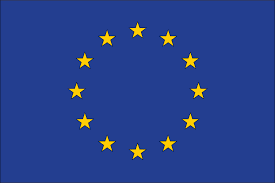Chemycal has been acquired by 3E
Learn MoreChemycal has been acquired by 3E
Learn MoreDiscover how Chemycal PRO helps you boosting your regulatory monitoring:

Title of document
Draft Commission Regulation amending Annex II to Regulation (EC) No 1333/2008 of the European Parliament and of the Council as regards the use of polyglycerol polyricinoleate (E 476) and the Annex to Commission Regulation (EU) No 231/2012 as regards specifications for glycerol (E 422), polyglycerol esters of fatty acids (E 475) and polyglycerol polyricinoleate (E 476) (Text with EEA relevance)
Description
The text revises the EU specifications of the authorised food additives glycerol (E 422), polyglycerol esters of fatty acids (E 475) and, polyglycerol polyricinoleate (E 476) and authorises an extension of use of polyglycerol polyricinoleate (E 476) based on the recent scientific opinions from the European Food Safety Authority (EFS). For glycerol (E 422), the current specifications are adapted by reducing the maximum limits for toxic elements (arsenic, lead, mercury and cadmium), by deleting the identification method based on acrolein formation during heating, by deleting the test for the presence of acrolein, by including a maximum limit for acrolein and by modifying the definition of glycerol (E 422). For polyglycerol esters of fatty acids (E 475), the current specifications are adapted by reducing the maximum limits for toxic elements, by including maximum limits for the sum of 3-monochloropropanediol (3-MCPD) and 3-MCPD fatty acid esters (expressed as 3-MCPD), glycidyl fatty acid esters (expressed as glycidol) and erucic acid and by modifying the definition of polyglycerol esters of fatty acids (E 475). For polyglycerol polyricinoleate (E 476), the current specifications are adapted by reducing the maximum limits for toxic elements, by including maximum limits for the sum of 3-monochloropropanediol (3-MCPD) and 3-MCPD fatty acid esters (expressed as 3-MCPD) and glycidyl fatty acid esters (expressed as glycidol) and by modifying the definition of polyglycerol polyricinoleate (E 476).The text also authorises the use of polyglycerol polyricinolate (E 476) in food category 03 'Edible ices' at a maximum level of 4,000 mg/kg and in food category 12.6 'Sauces' at an increased maximum level of 8,000 mg/kg for emulsified sauces with a fat content of 20% or more.In order to allow for a smooth transition, the text lays down that the use of the food additives glycerol (E 422), polyglycerol esters of fatty acids (E 475) and polyglycerol polyricinolate (E 476) lawfully placed on the market before the date of the entry into force of this Regulation is allowed during a transitional period of six months. Foods containing such food additives may continue to be placed on the market during the same transitional period and may remain on the market until their date of minimum durability or 'use-by-date'. The food additive polyglycerol esters of fatty acids (E 475) legally placed on the market after the date of entry into force of this Regulation and complying with the reduced intermediate maximum level for glycidyl fatty acid esters (expressed as glycidol) is allowed to be used until the exhaustion of stocks and foods containing such food additive should be allowed to be placed on the market and to remain on the market until their date of minimum durability or 'use-by-date'.
Notifying member: European Union
Notification: G/SPS/N/EU/629
Objective tag
Food safety (SPS)
Documents
Timing:
2013 © MyChemicalMonitoring. ALL Rights Reserved. About Us | Terms and Conditions